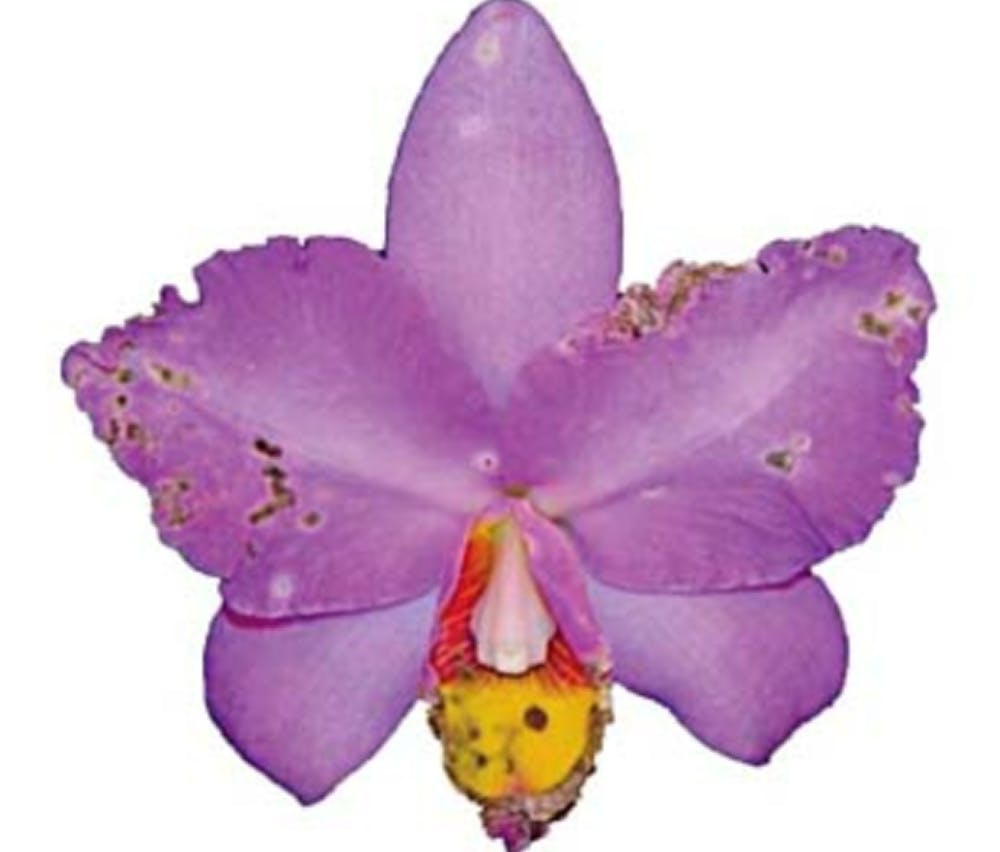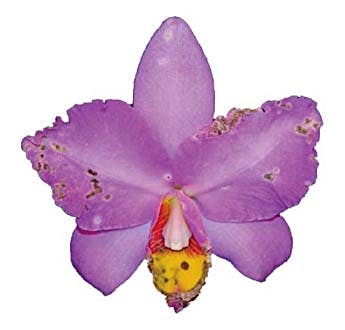
Orchid Blossom Midges


Gallery

Symptoms
The midges have been found primarily on Dendrobium and Vanda, with recent reports on Cattleya, Cymbidium and Phalaenopsis, and may affect other orchids as well. Recent imports from Southeast Asia, Australia and Hawaii should be isolated initially until they are determined to be free of this pest and any others. Evidence of possible orchid blossom midge infestation includes bud blast, brownish spots that appear chewed, holes in buds and floral tissues, and fungal infections that may follow in areas damaged by the midges. The midge larva is most prevalent in temperate areas and can be identified by their presence inside unopened flower buds (no other maggots are found within buds) and peculiar capability of self-propulsion enabling them to spring several centimeters around flower parts. Under favorable conditions, this pest can become entrenched within 14 days. A serious infestation can be devastating, rapidly destroying an entire flowering if left unchecked, according to Gene Monnier, owner of J.E.M. Orchids, Delray Beach, Florida.
Treatment
While methods for controlling the midge have not been fully determined, effective sanitation is important. Remove all damaged, molding or dropped buds. Eradicate weeds in the growing area, as well as in and around plants, says Johnson. Healthy plants are more resistant to pests and diseases than weaker ones. Overcrowded plants allow pests and disease to spread through a collection more quickly than those given adequate growing space.
Applications of pesticide may be useful, such as Diazinon granules to the medium to eradicate burrowing larvae and Orthene (used with a penetrant such as LI 700) to foliage and buds to control egg-laying adults and larvae, according to Johnson. Repeat the spraying of foliage and buds weekly for three to four weeks to eliminate the pest at each stage of its development, according to Monnier. While the above pesticides may prove effective, results have not yet proven conclusive, says Andy Easton, director of education, American Orchid Society. Always use chemical controls in accordance with dosage and safety recommendations from the manufacturer. For a severe infestation, it is advisable to remove all inflorescences before applying the pesticide.
Biological controls, such as Hymenopteran predatory wasps, have proven effective against other gall midge species, and may be useful for C. maculipennis as well. Further research is needed to definitively determine effective controls for this serious pest.
Additional Information
By Susan Jones
The orchid blossom midge is a member of the gall midge family (Cecidomyidae), so named for the galls that form in plants attacked by some species during their larval stage. The orchid blossom midge is polyphagous (feeds on many types of plants) and will attack orchid buds and flowers. This can cause bud blast, as well as damage and deformity to the developing floral tissues. Because the midge larvae flourish in conditions with high humidity and require a damp medium in which to pupate, they thrive under conditions ideal for growing orchids.
Further Reading
Dodge, Vivian M. 2003. “Sun Protection.” Vivi’s Orchid Corner. 8(6).
__. 2000. “Tips for August.” Vivi’s Orchid Corner. 5(7).
Withner, Carl L. 1997. “Good Orchid Growing or the Concept of Stress on Plants.” Orchid Society of Nova Scotia newsletter, May.
Susan Jones was the editor of Awards Quarterly and assistant editor of Orchids. American Orchid Society, 16700 AOS Lane, Delray Beach, Florida 33446
All reuse must contain the follwing:
Reprinted from the SEPTEMBER 2003 issue of Orchids -- The Bulletin of the American Orchid Society. Copyright American Orchid Society -- www.aos.org
Life Cycle
The small, flying adult midges lay large quantities of eggs in flower buds. The eggs and developing larvae are virtually undetectable inside the closed bud, until the damage from the feeding larvae becomes evident, according to Paul Johnson, PhD, Insect Research Collection, South Dakota State University, Brookings.
Midge larvae are small (approximately 7/64–1/8 inch [2.5–3 mm] in length), white, and resemble fungus-gnat larvae in appearance. When present, as many as 30 insects have been found in a single flower bud. This is their most visible stage. At maturity, larvae jump from the plant to the surface of the potting medium by curling and uncurling their bodies in a springlike fashion for propulsion. They then burrow into the top layer of the medium to pupate. The tiny adult flies emerge about three weeks later. They are approximately 1/16 inch (1.5 mm) in length, with long banded legs, large eyes, long antennae, spotted wings, and a wingspan of about 7/64– 1/8 inch (2.5–3 mm). They mate shortly after emergence.
Controls
While methods for controlling the midge have not been fully determined, effective sanitation is important. Remove all damaged, molding or dropped buds. Eradicate weeds in the growing area, as well as in and around plants, says Johnson. Healthy plants are more resistant to pests and diseases than weaker ones. Overcrowded plants allow pests and disease to spread through a collection more quickly than those given adequate growing space.
Applications of pesticide may be useful, such as Diazinon granules to the medium to eradicate burrowing larvae and Orthene (used with a penetrant such as LI 700) to foliage and buds to control egg-laying adults and larvae, according to Johnson. Repeat the spraying of foliage and buds weekly for three to four weeks to eliminate the pest at each stage of its development, according to Monnier. While the above pesticides may prove effective, results have not yet proven conclusive, says Andy Easton, director of education, American Orchid Society. Always use chemical controls in accordance with dosage and safety recommendations from the manufacturer. For a severe infestation, it is advisable to remove all inflorescences before applying the pesticide.
Biological controls, such as Hymenopteran predatory wasps, have proven effective against other gall midge species, and may be useful for C. maculipennis as well. Further research is needed to definitively determine effective controls for this serious pest.

FREE ACCESS: Orchid DealWire
Get notified when orchid vendors have special promotions and exclusive savings.



